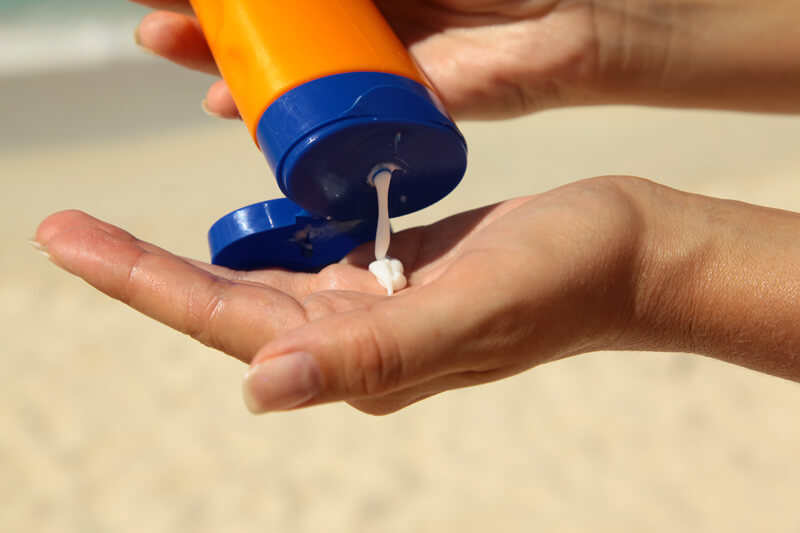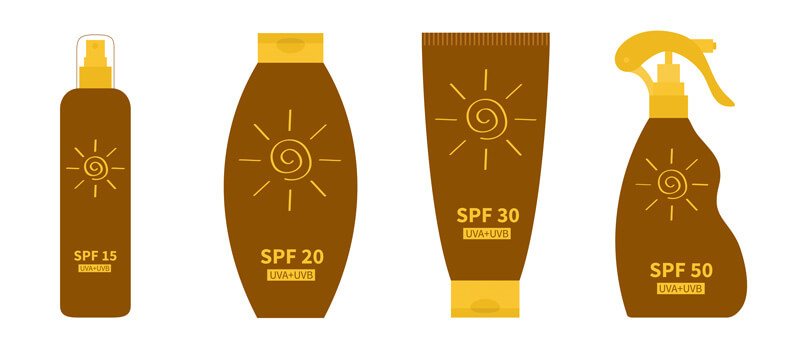Melanomas, Sunscreen, and Staying Safe in the Sun
Posted on |

Do you have spots on your skin that worry you? You are not alone. The American Cancer Society estimates that over 100,000 new cases of skin cancer will be diagnosed in 2019; of these, more than 11,000 cases are estimated to be fatal. Fortunately, there is hope. Skin cancer, particularly malignant melanomas, are one of the most treatable forms of cancer and are also one of the easiest to prevent.
What Is Melanoma?

Melanoma is a form of skin cancer that begins in the cells that cause the pigmentation of our skin, called melanocytes. When these cells are exposed to radiation, such as what the sun or UV tanning beds provide, they cause our skin to tan. The dark side of this is that the DNA of these cells can misfire, causing them to form malignant (harmful) tumors instead.
What Can I Do to Protect Myself?
There is some good news. According to the Melanoma Research Foundation, nearly 90% of malignant melanomas are considered to be preventable, and there are measures you can take to protect yourself.

Things that limit your exposure to UV radiation, such as wearing long sleeves and hats, seeking shade when outdoors, and avoiding tanning beds are all steps you can take. Another important step to take is wearing sunscreen.
Sunscreen Recommendations
Although UV exposure is not considered safe at any level, regular use of sunscreen can mitigate the sun’s harmful effects.

The Food and Drug Administration (FDA) recommends year-round sunscreen use, regardless of the weather. They also recommend using a sunscreen with a sun protection factor (SPF) of 15 or higher. The American Cancer Society recommends an SPF of 30.
Broad spectrum protection is also a must, meaning the sunscreen should provide protection against both UVA and UVB rays. Both the SPF factor and the type of broad-spectrum protection will be listed on the ingredient labels so consumers can easily identify the right kind of product to use for their skin.
Proper Use of Sunscreens

Apply a liberal application of sunscreen at least 15 minutes before going outside. Frequent re-application of sunscreen is necessary. The SPF value indicates the amount of time the skin will be protected. Consumers need to be diligent about re-applying, especially when spending time in the water or when perspiring in the heat.
What Sunscreen is Best?

There are many forms and types of sunscreens available today. Consumers can choose between sprays, lotions, and sticks. They can also choose from several FDA-approved sunscreen filters for purchase in the United States. There are non-organic filters that can be used and include Zinc Oxide and Titanium Dioxide. These work by creating a barrier to physically prevent the sun’s ray from penetrating the skin.
There are also many organic filters to choose from and the more common ones include Avobenzone, Oxybenzone, Octinoxate, and Octocrylene (Skinacea).
Although the type, form, or protection factor one chooses is a personal preference, the main goal of a sunscreen is to protect against skin cancer. Daily use is paramount in prevention.
Skin cancer is scary but preventable. By following these steps and guidelines, you can keep yourself and your family safe from the sun all-year-round.
Vibrance Medspa offers an array of professional skincare products and sunscreens by IMAGE Skincare. For additional information on this topic, please contact us.
